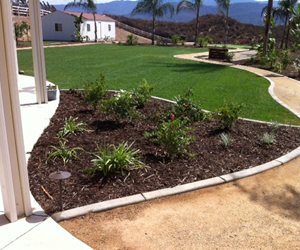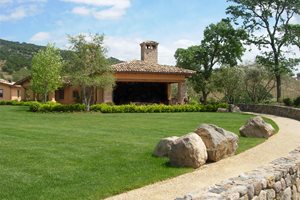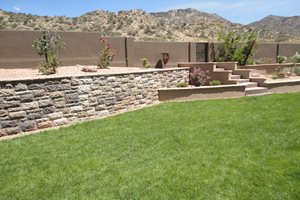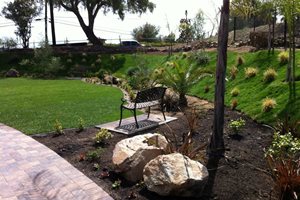Benefits of Lawn Aeration
Learn about the process of lawn aeration and why it’s beneficialWhy is aeration necessary?
In the old classic "The Foot Book," Dr. Seuss tells us about all the different kinds of feet we meet ... "small feet, big feet, here come pig feet." The fact is that feet and paws wear down turf differently. As people walk and run, their weight rolls from heel to toe, causing compaction problems. Dog paws, on the other hand (pun intended), actually dig in from the front claws, causing more tearing. To exacerbate the problem, dogs tend to pace and use the same pathways over and over again. The soil compaction from foot traffic slows water penetration and can reduce root growth.
Lawns are one of the most multi-function parts of our landscape. Not only do we enjoy them for their aesthetic value, but we also use them as makeshift patios, pathways, and playgrounds for our kids. The downside is that lawns can become compacted from all of this foot traffic, which leads to a thin, poorly-draining lawn. Learn the ins and outs of aerating to prevent compaction and keep your lawn looking sharp.
Types of aeration
- Core aeration - Core aeration, or core plugging, is the most common way of aerating your lawn. The aerating machine removes plugs of soil from the lawn and leaves them lying on the lawn surface. To avoid damaging your sprinklers, be sure to flag your sprinkler heads before running this machine over your lawn. Core aeration allows air to get into the root system, breaks up the compaction of soil, and allows water and nutrients into the root zone. Most contractors aerate in fall, then apply grass seed and fall fertilizer right afterwards to help the lawn fill in.
- Aerovating - This process uses a machine with vibrating tines which penetrate the soil and vibrate at such a rate of speed that they break up compaction effectively. “Aerovating is most effective in dry weather,” says Brian Beane of Nature’s Select in Winston Salem, NC. “If the soil is moist, use core aeration.”
Aeration dos and don’ts
Do aerate in fall.
Though you can aerate anytime spring through fall, aerating in fall works well because you can apply a fall fertilizer which is high in phosphorus and will support root growth. Fall is also a great time to overseed, which is helpful after aeration since you’ve just removed plugs of lawn from the soil.
Don’t remove the plugs.
When doing core aeration, it is tempting to remove the little plugs of soil from your lawn, since they look like little dog poops. However, it’s best to leave them be. “The plugs dissolve into the environment within about two weeks, and they help your soil microbes break down your thatch layer,” says Beane.
Do make at least two passes with the aerator.
“In areas where the turf is weak and compacted, we might make more than two passes,” says Beane.
Do hire a reputable company.
Though many fly-by-night businesses offer seasonal aeration services, if the price is cheaper than your usual lawn care service would charge, you should be suspicious. Many companies charge a rock-bottom price, but only make a single pass with the aerator and so don’t really do the thorough job your lawn needs. They also may not include services such as fertilizing and overseeding after the aeration is finished.
Cost of aeration
Most landscaping companies charge about $40 per 1000 square feet to aerate, although there may be a minimum charge for small spaces. This price includes aeration, overseeding, and fertilizing.

 Backyards
Backyards
 Front Yards
Front Yards






